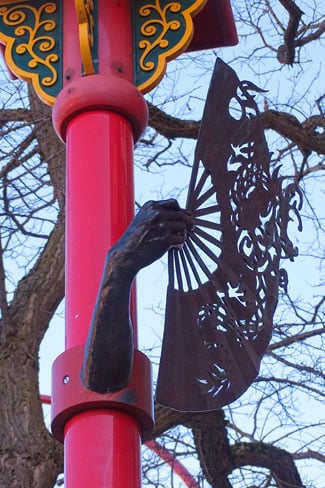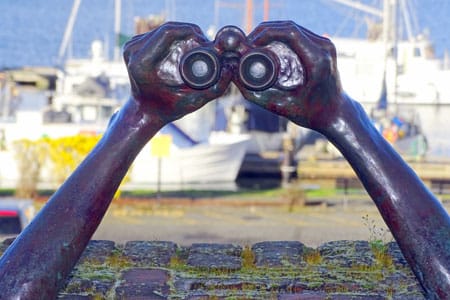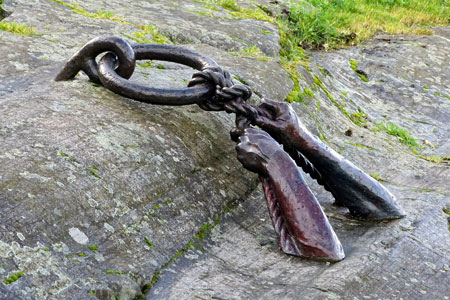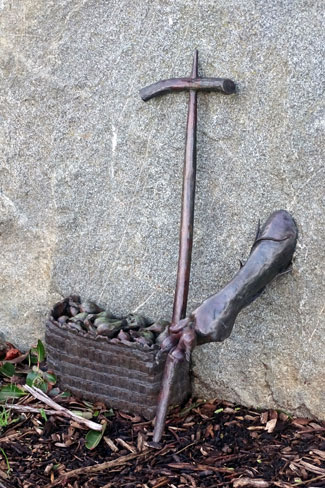Take a stroll through Victoria’s fascinating history, guided by the Hands of Time.
A series of twelve captivating bronze sculptures by the talented artist, Crystal Przybille. These sculptures were created to celebrate the 150th anniversary of Victoria’s incorporation back in 2012.
Each of these sculptures showcases life-size hands, varying in age and gender, all engaged in activities that symbolize Victoria’s rich history and cultural heritage. From carving a canoe paddle to raising a tea cup, these bronze beauties tell tales of Victoria’s history and present.
These hands are designed to spark curiosity and ignite a sense of wonder in all who encounter them. Whether you’re a local or a visitor, these sculptures beckon you to explore and contemplate Victoria’s vibrant past.
Let’s take a closer look at each stop on this journey through time:

- Carving a Canoe Paddle: Situated near the waterfront in Lime Bay Park, this sculpture represents the past and present Lekwungen culture.
- Holding a Railway Spike: Located on Wharf Street (near the old E&N Railroad), this sculpture references the history and impact of the island railroad construction in the late 1800’s.
- Performing with a Fan: Installed on Government Street (between Fisgard and Pandora), this sculpture symbolizes the significance of Chinese culture and the performing arts in Victoria’s identity.
- Carrying Point Blankets: Found on the West entrance of The Hudson, this sculpture alludes to The Hudson Bay Company’s extensive trading of wool point blankets during the North American Fur Trade.


- Carrying Books: Stationed on the west wall of City Hall, these books signify education and governance in Victoria.
- Holding Binoculars: Based on a brick wall on Wharf Street (near Bastion Square), these binoculars look out to the ocean, referencing the city’s beautiful geography and nature.
- Tying a Rope to a Mooring Ring: Installed on bedrock, below Wharf Street near David Foster Way, this sculpture symbolizes the arrival of the first tall ships to the area. Original mooring rings from Fort Victoria can also be found here!
- Panning for Gold: Situated near the Customs House (where mining licences were issued), this sculpture represents the many people brought to Fort Victoria by the 1858 Gold Rush.


- Raising a Tea Cup: Located at the corner of Government and Humboldt Street, this sculpture illustrates Victoria’s traditional and historical connection to Britain
- Holding a Mirror: Found on the Lower Causeway wall (near the central staircase), this sculpture reflects the inner harbour, a key aspect of Victoria’s history and identity.
- Cupping Dogwood Blossoms: Stationed on the north side of Belleville Street, near Government Street, this sculpture showcases Pacific Dogwood, British Columbia’s floral emblem.
- Digging Camas Bulbs: Based in a landscaped garden on Beacon Hill at Beacon Hill Park, this sculpture signifies the gathering baskets and digging sticks used by the Lekwungen people to gather Camas blubs. The sculpture currently overlooks a filed of Camas bulbs, a traditional territory of the Lekwungen people.

Each of these stops offers a unique glimpse into Victoria’s past and present, inviting you to slow down and embrace the moment. So, why not take a break from the hustle and bustle of everyday life and embark on an adventure with The Hands of Time?
Ready to uncover Victoria’s vibrant history with the Hands of Time? Find the map and brochure below!



